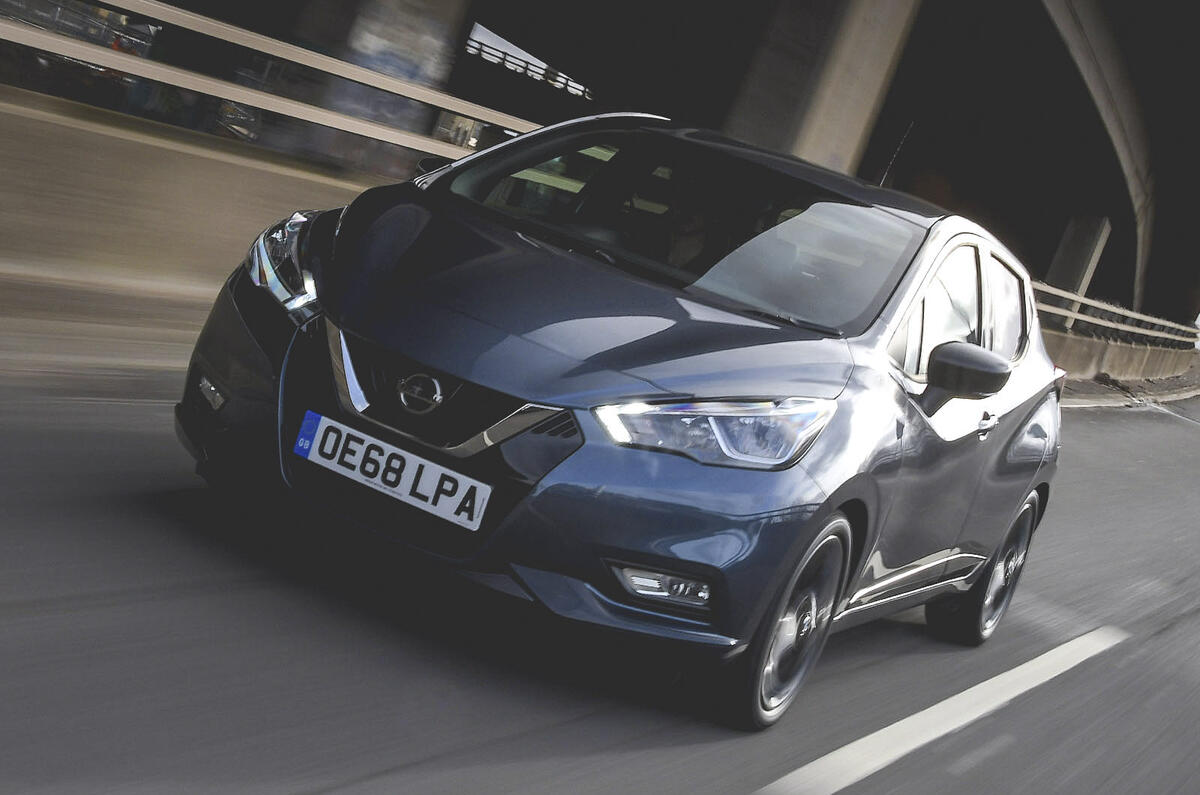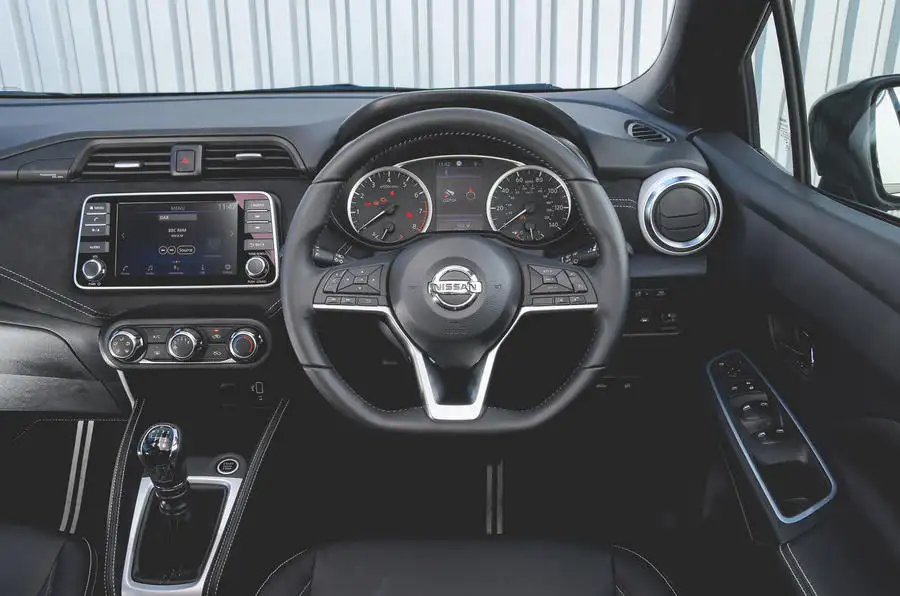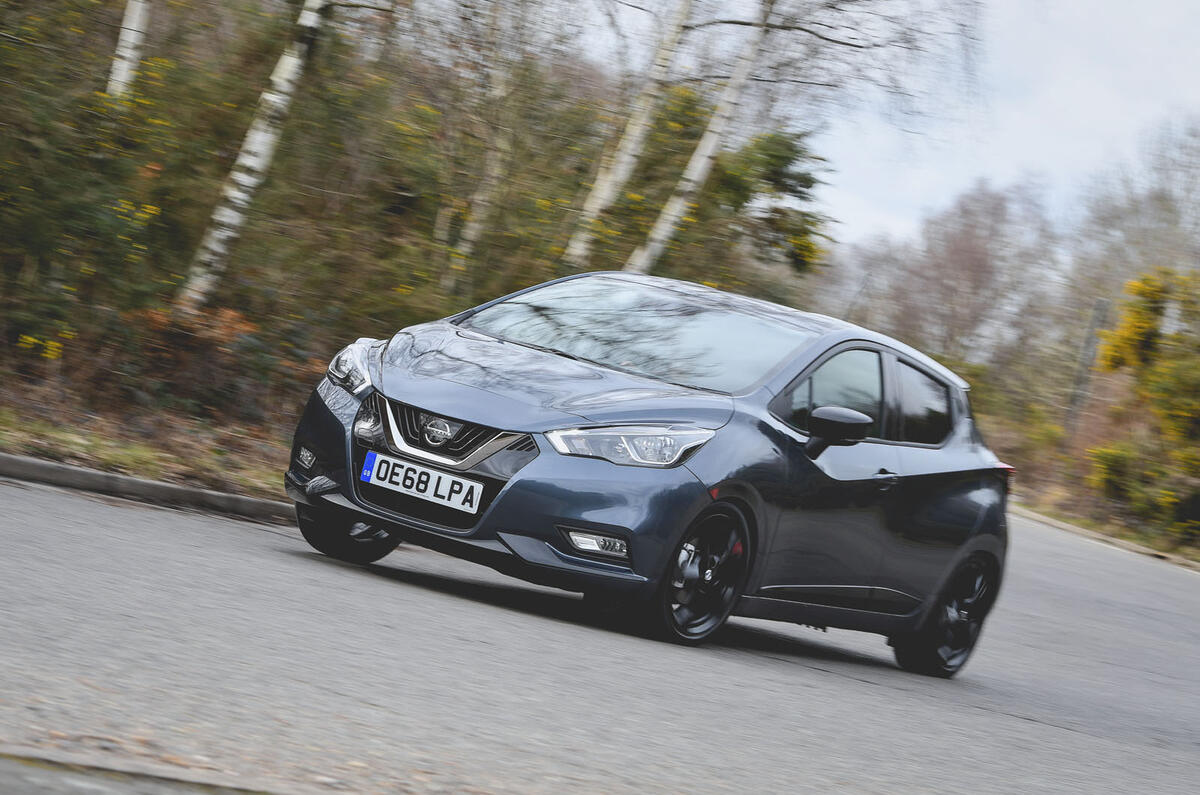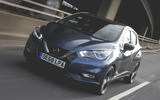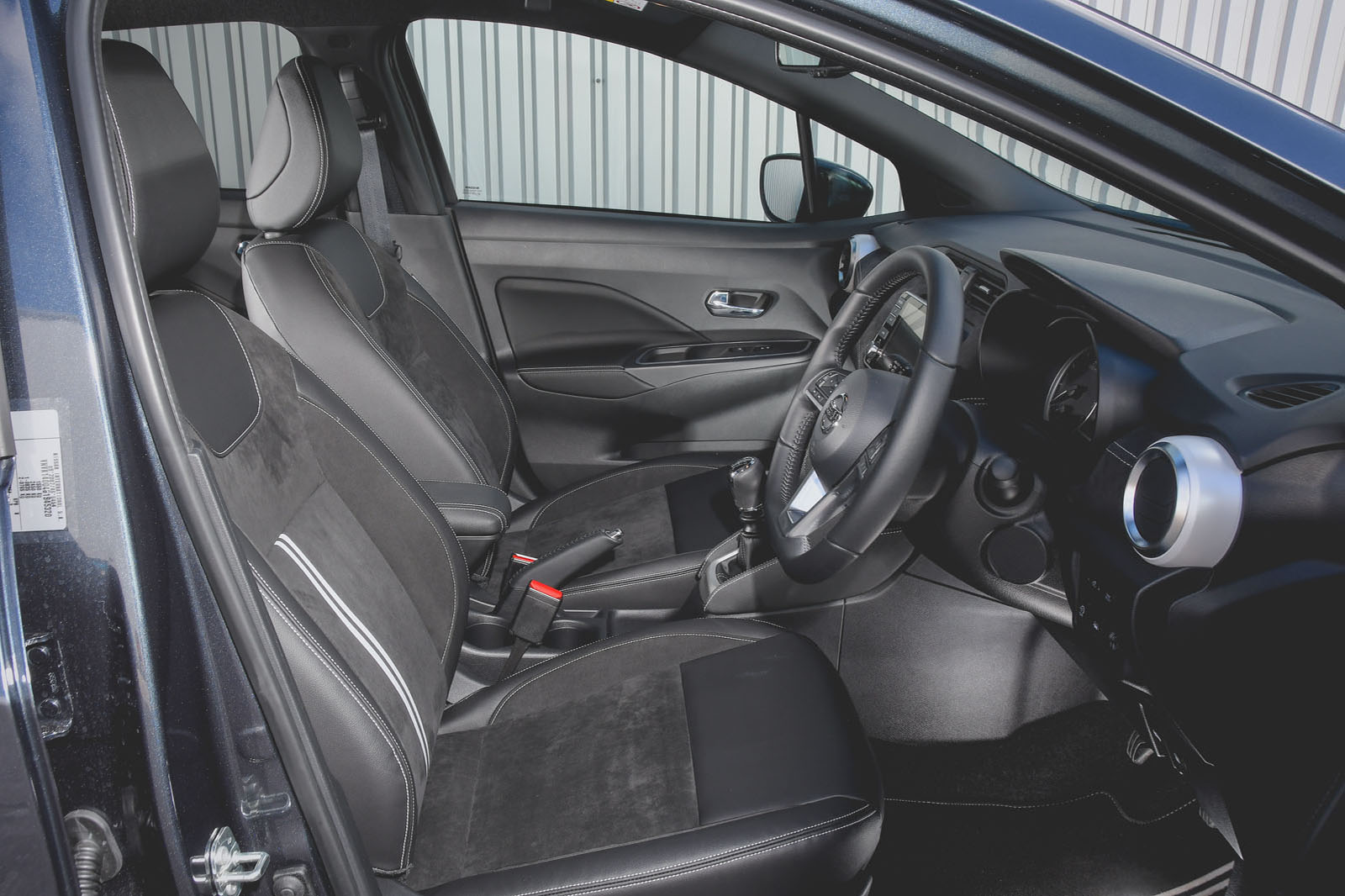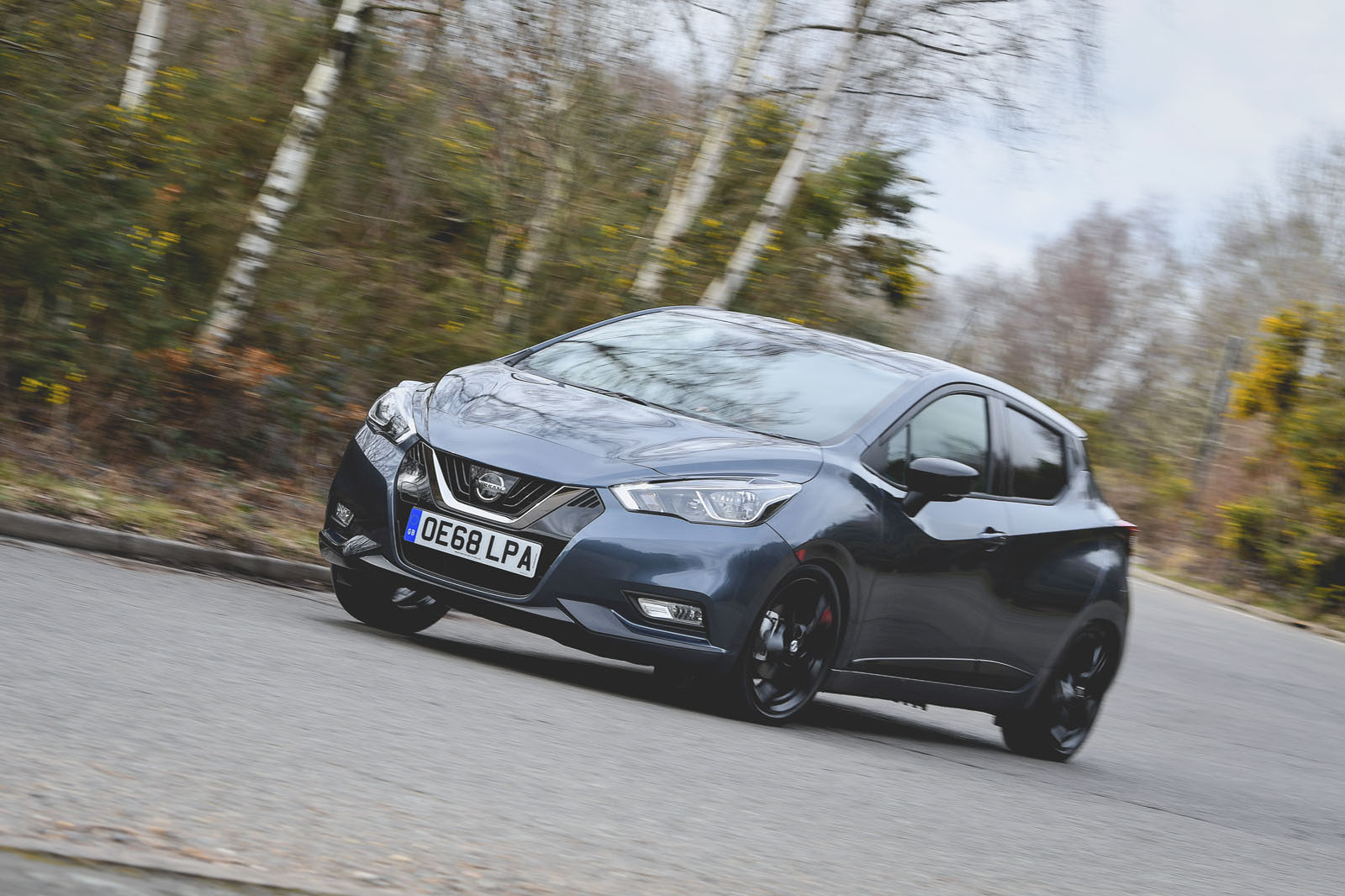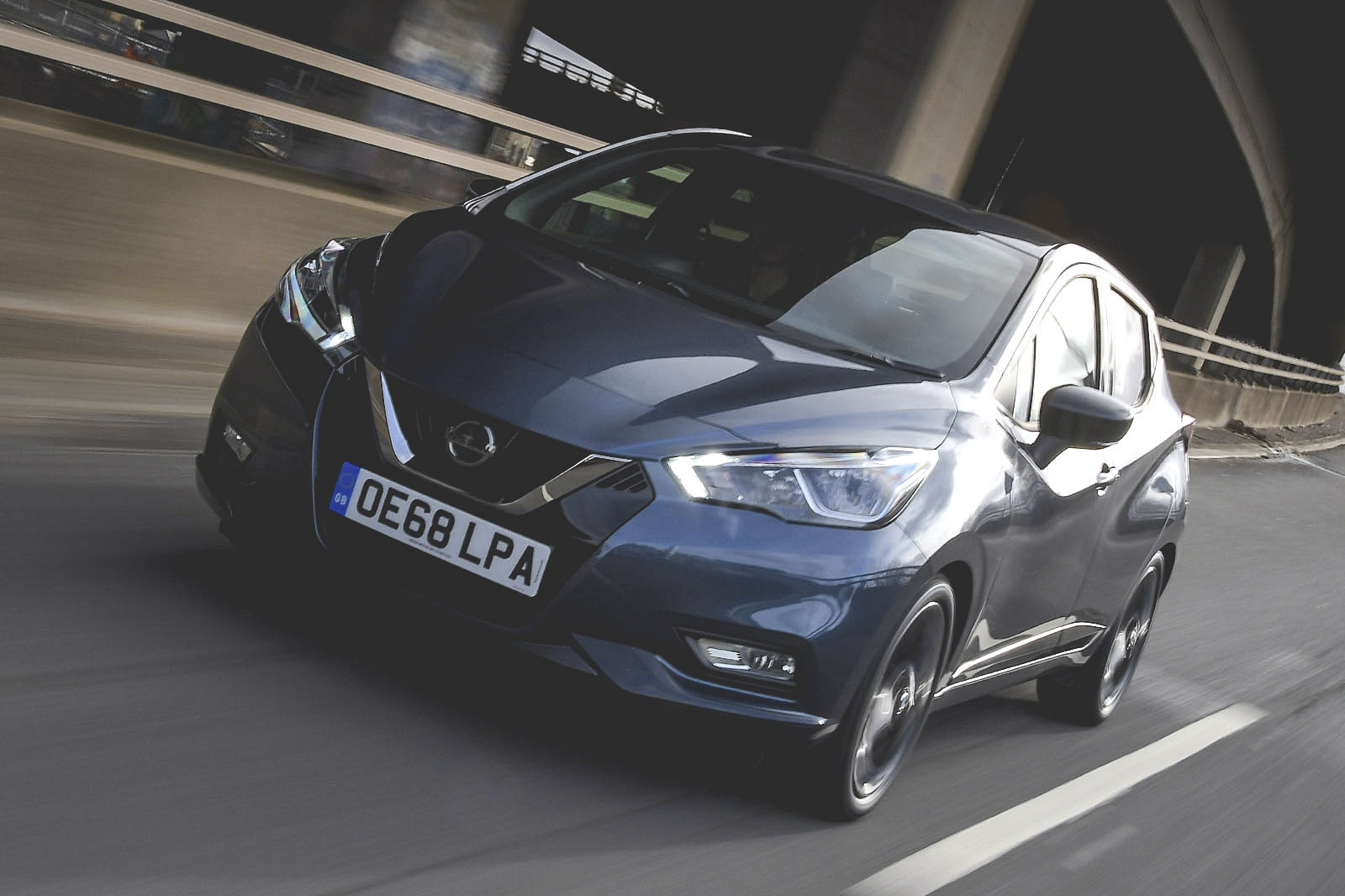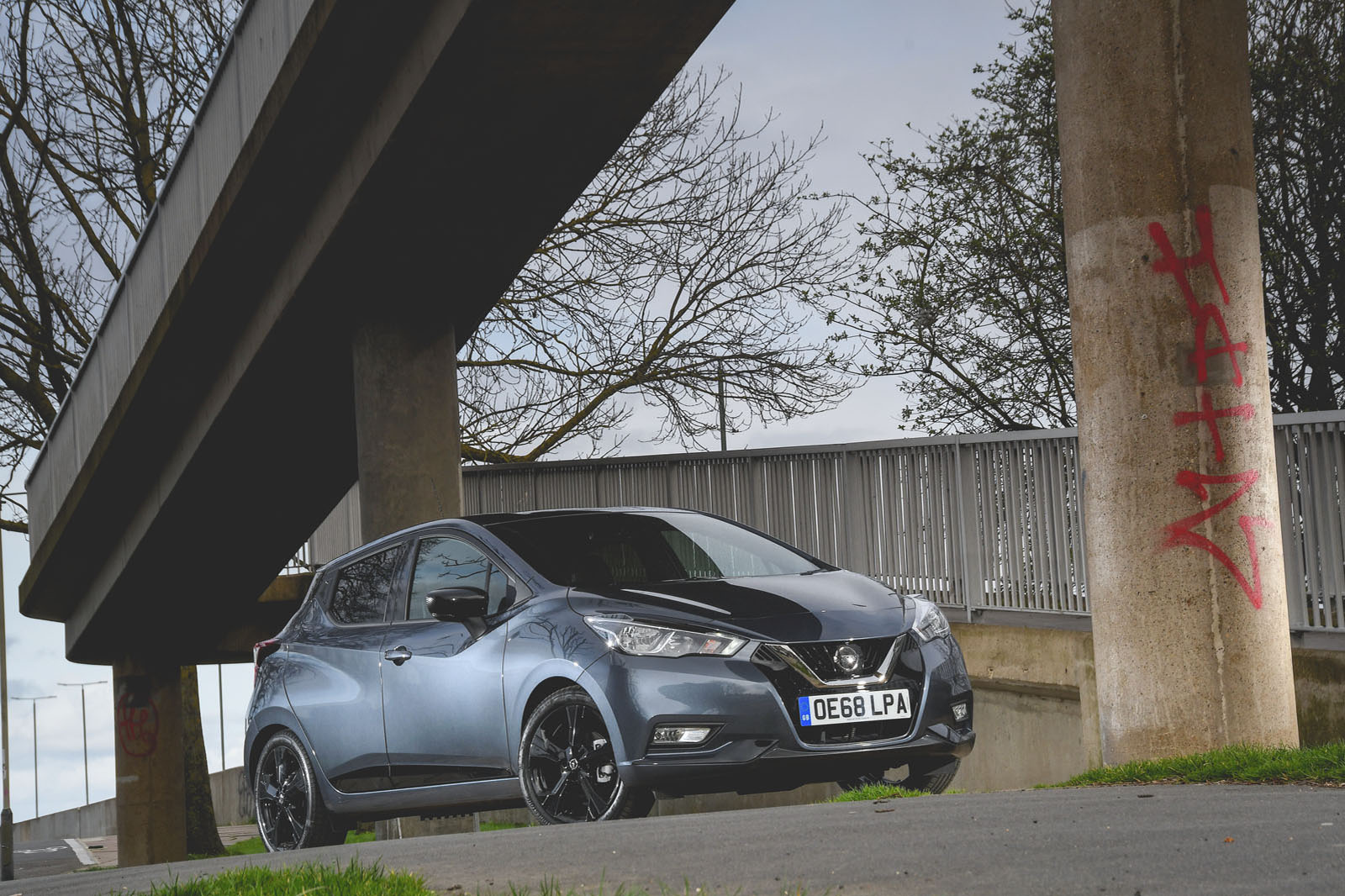When the current, fifth-generation version of the Nissan Micra supermini first hit UK roads in 2017, the Nissan's appearance suggested this N-Sport might be coming.
Gone were the effete, bug-eyed curves of generations gone by, ditched for a much more edgy, wedgey, arrowhead aesthetic that, though contemporary, looked less authentic on the car, according to some estimations. Whether they seem to belong on a Micra or not, however, the car’s new youthful, sporting looks undoubtedly lend themselves to a performance makeover; and, as evidenced by this week’s road test subject, the go-faster treatment is exactly what the Micra has now got.
As part of the car’s first mid-life update, a couple of new engines have been added to the model range, with an Xtronic CVT two-pedal transmission made available in anticipation of growing interest in automatic-equipped superminis. Some equipment and trim revisions have been brought in too, which we’ll also get into over the following pages.
But it’s the Micra N-Sport that’s the headline addition. This derivative becomes the first product from the Renault -Nissan-Mitsubishi Alliance to feature the 1.0-litre three-cylinder version of the new petrol engine family developed in tandem with Daimler and, in 1.3-litre form, already used to power both the Nissan Qashqai and the Mercedes A-Class. It moves the Micra onto peak power of 115bhp – enough to stand comparison with cars like the Ford Fiesta ST-Line and Seat Ibiza FR. As you’re about to read, the N-Sport also benefits from changes to the technical specification of the suspension, steering and transmission, and from upgrades to the exterior styling and cabin.


